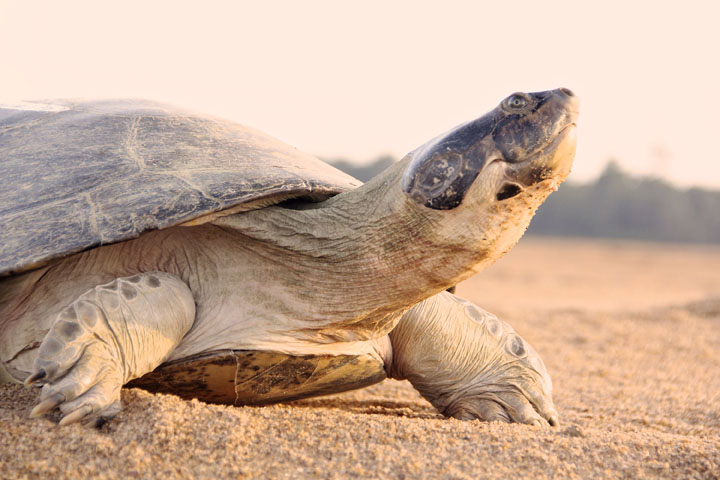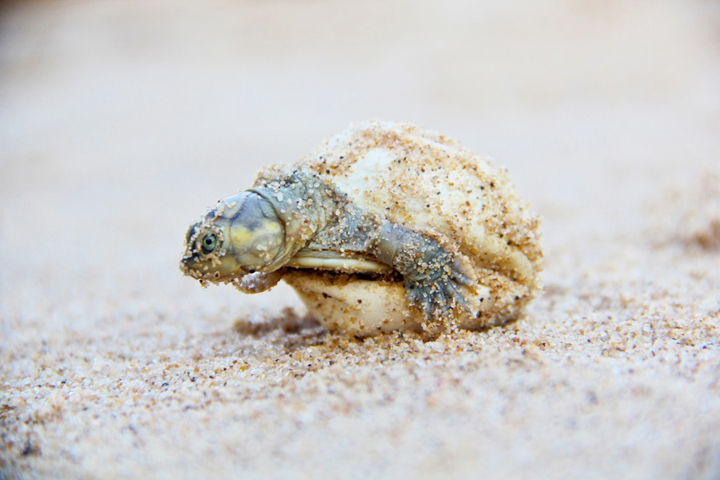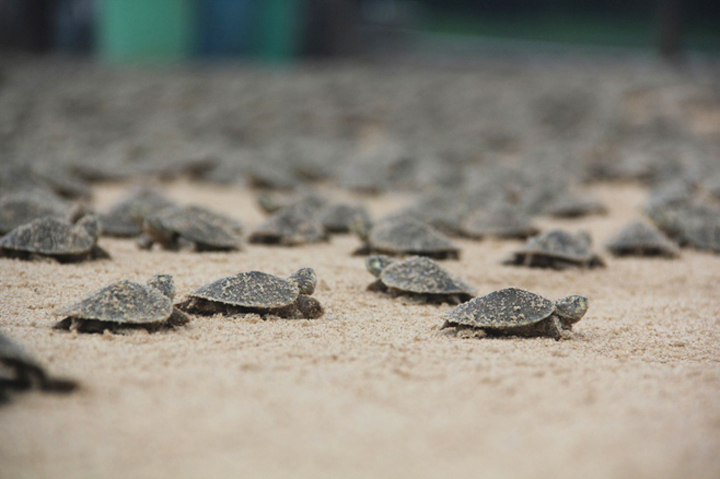Turtles Who Have Something to Say
By Vicki Croke
Dogs bark. Cows moo. Cats meow. Those are easy. But what sound would you make if you were asked to mimic a turtle?

A Giant South American river turtle. Courtesy of WCS.
Until recently, even scientists thought of freshwater turtles as silent types. But not only do these animals vocalize, according to a new study reported in the journal Herpetologica, it turns out they have some important things to say to one another. Like maybe, “Hey, let’s nest over here!” or “Little babies! This way to the water!”
According to the Wildlife Conservation Society:
Scientists working in the Brazilian Amazon have found that Giant South American river turtles actually use several different kinds of vocal communication to coordinate their social behaviors, including one used by female turtles to call to their newly hatched offspring in what is the first instance of recorded parental care in turtles.
Analyzing the sounds and the turtles’ behavior, scientists believe that the species’ vocalizations provide important social information. It appears that adult females synchronize with each other when choosing nesting sites.

A hatchling emerging from an egg. Courtesy of WCS.
Baby vocalizations in and out of the egg may promote synchronized hatching. And, in that first instance of recorded parental care in turtles, females could be using their voices to guide nestlings into the water (where the little ones will stick together, migrating with the adult females for more than two months.)
There’s much work still to be done.
“These distinctive sounds made by turtles give us unique insights into their behavior, although we don’t know what the sounds mean,” said Dr. Camila Ferrara, Aquatic Turtle Specialist for the Wildlife Conservation Society’s Brazil Program. “The social behaviors of these reptiles are much more complex than previously thought.”
During the nesting season, these turtles gather in huge numbers and this work may shed light on how that happens. According to WCS:
Working on the Rio Trombetas between 2009 and 2011, the research team captured 270 individual sounds made during 220 hours of recording made with both microphones and hydrophones when the turtles were swimming through the river. The scientists then conducted spectrographic analyses on the repertoire, which they subdivided into six different types of vocalization made by turtles during the nesting season, which begins as the reptiles leave the seasonally flooded forest for nesting beaches along river banks. The scientists also sought to correlate vocalizations with specific behaviors.

River Turtle hatchlings. Courtesy of WCS.

3 Responses to “Turtles Who Have Something to Say”
This certainly is a good news story. I have always been fascinated by turtles since seeing one when I was very young, swimming under my grandads little boat in Australia. One day I hope to see the little hatchlings heading out to sea and will now imagine what they are saying to each other. Most share worthy article.
David M. Carroll’s natural history The Year of the Turtle is a great book for any lover of turtles. With beautiful illustrations by the author too.
This looks wonderful, Steve. Thanks so much for the suggestion.
Comments are closed.